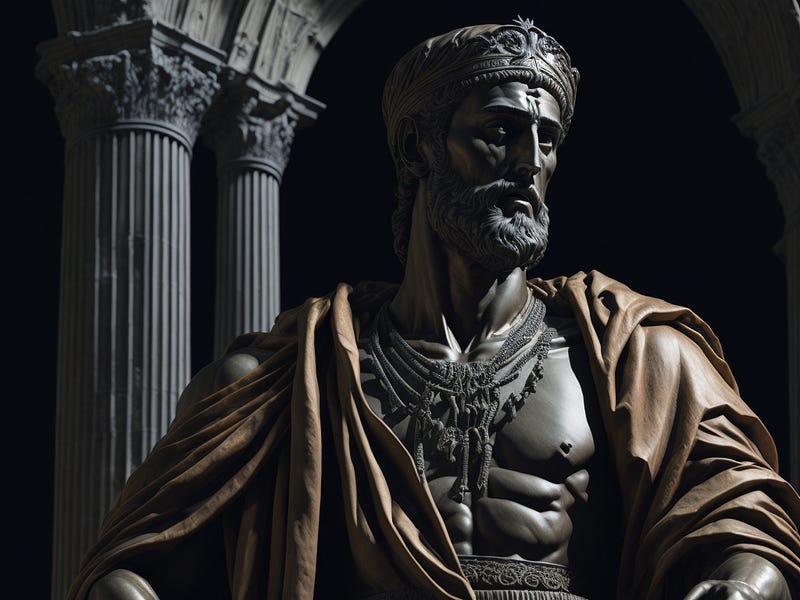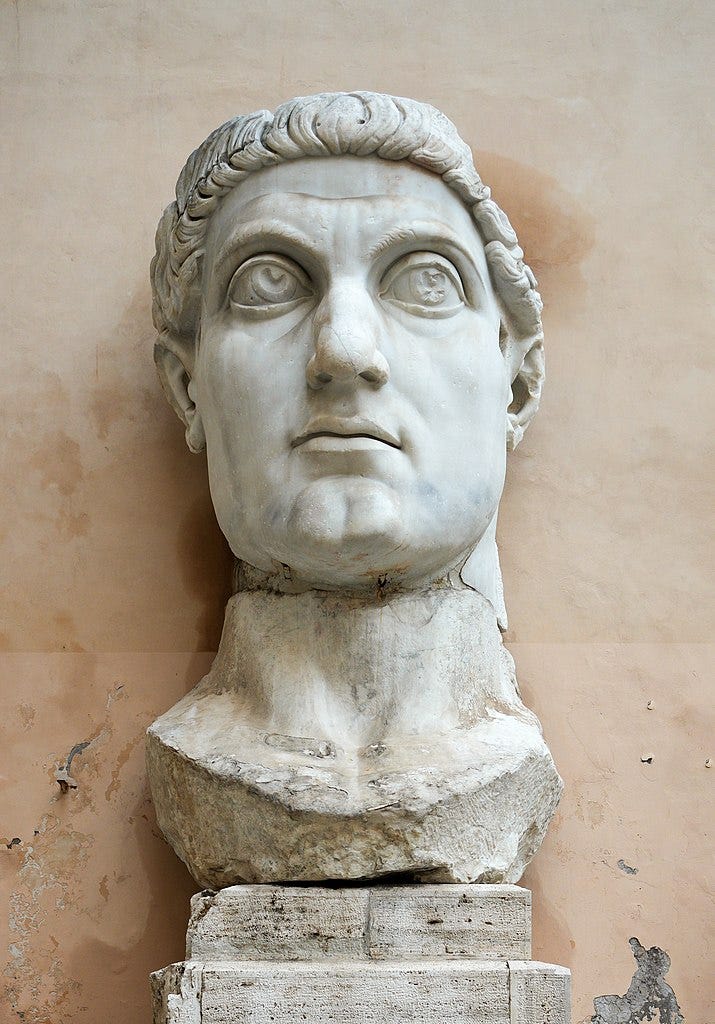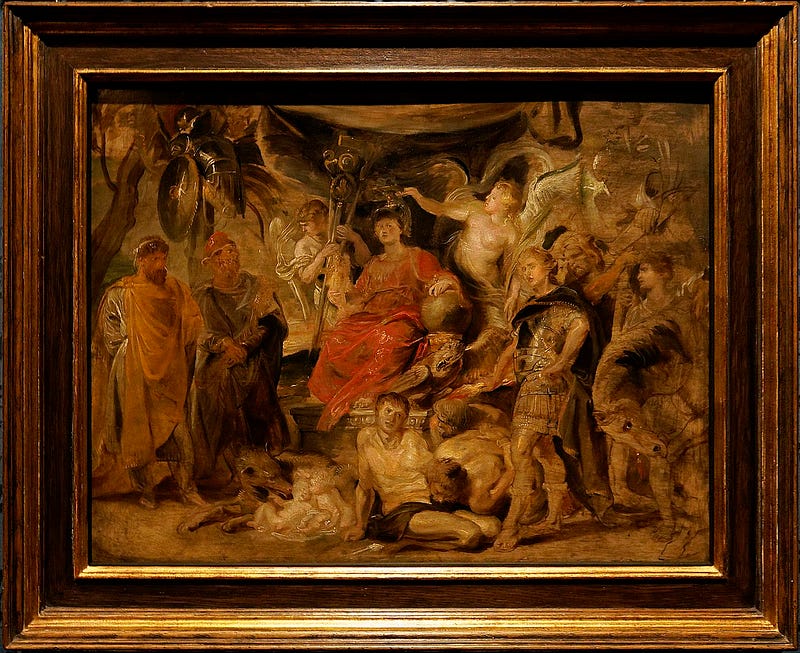A Paradoxical Legacy: The Complex Life of Constantine the Great
Written on
Chapter 1: A Saint with a Dark Side
Constantine the Great, often referred to as Constantine I, significantly influenced the trajectory of Christianity. However, one must question whether this brutal ruler truly warranted the title of saint.

Eusebius of Caesarea described him as “a soul blessed threefold, in union with God, free from all worldly impurities.” Yet, this supposedly divine connection did not deter him from orchestrating the murders of his wife, son, father-in-law, and numerous other relatives. In terms of violent behavior, he could rival the infamous Nero. Interestingly, while Nero is commonly regarded as the epitome of malevolence, Constantine was canonized. His identity as a devout Christian emperor remained intact, despite the fact that he was baptized only on his deathbed.
Section 1.1: The Roman Empire's Governance Structure
Constantine's rise to power was unexpected. His father, Constantius Chlorus, had no legitimate claim to appoint him as emperor. This was not due to Constantine's illegitimate birth to Helena, a daughter of an innkeeper—Constantius had divorced her to marry Theodora, the daughter of Augustus Maximian. The Roman Empire was then structured under a tetrarchy, a system that called for four rulers to govern simultaneously: two augusti and two caesars. This arrangement aimed to efficiently manage the expansive empire and reduce the risk of civil wars. Each augustus was to select a caesar as a co-ruler and successor, thereby ensuring a continuous cycle of leadership.

When Constantius Chlorus became one of the two augusti, Flavius Severus and Maximinus Daia occupied the caesar positions. Although Constantine was initially overlooked, as the son of an augustus, he participated in military campaigns. During one such campaign, he decided to claim power for himself.
At 34 years of age, Constantine joined his father in battles against the Picts in Britain. Following a victory, Constantius retreated to York where he died, leaving Constantine in command of both the state and the legions. The legions declared him as the new augustus, effectively bypassing the tetrarchy's established protocol.
This unexpected move angered the ruling second augustus, Galerius, and the caesars. However, concerned about the potential for civil strife, Galerius made significant compromises. While he refused to formally recognize Constantine as augustus, he did grant him the authority of a caesar and transferred control of territories beyond the Alps—namely Gaul, Britain, and Spain. This decision sparked discord among other leaders, leading to the eventual disintegration of the tetrarchy.
In 307, Constantine allied with another usurper, Maxentius, marrying Maxentius's sister, Fausta, to solidify their partnership. However, this alliance was short-lived. In 312, Constantine defeated Maxentius’s forces at the Battle of Turin and subsequently won a significant battle at the Milvian Bridge near Rome, emerging victorious despite being outnumbered. Maxentius met his demise in the Tiber, and Constantine became the sole ruler of the Western Roman Empire.

Section 1.2: A New Era of Religious Freedom
In 313, Constantine introduced the Edict of Milan, which granted religious freedom across both the Eastern and Western Roman Empires. Jointly issued with Licinius, who governed the East, the edict recognized Christianity as a legitimate faith, ending its persecution.
However, it is misleading to claim that this edict established Christianity as the official state religion. A passage from the edict states:
“When I, Constantine Augustus, as well as I, Licinius Augustus… jointly considered what would benefit the general welfare, we resolved to take action to benefit all humanity, especially in service to the deity, whose favor we sought to win.”
In essence, the rulers aimed for widespread religious tolerance across the empire. Yet, Constantine actively promoted Christian movements, significantly aiding in Christianity's transition from a persecuted sect in the early 4th century to the predominant religion by the century's conclusion.
The year following the Edict of Milan, Constantine convened the Synod of Arles, the first assembly of Christian bishops in the Western Empire. After Licinius's death in 324, Constantine, now the sole ruler, oversaw the First Council of Nicaea, asserting his influence over church affairs. Despite apparent interference, Christians, who had recently endured persecution, welcomed his support.
Constantine also commissioned Eusebius of Caesarea to produce 50 copies of the Bible. Eusebius described this project in “The Life of Constantine”:
“I deemed it necessary to suggest that you direct skilled scribes to create fifty copies of the Holy Scriptures on prepared parchment, written legibly and in a convenient format for the Church’s teaching.”
Yet, other aspects of his biography raise doubts about the genuineness of his conversion.

Chapter 2: The Cruel Reality of Constantine
Constantine was not hesitant to issue death sentences. He sanctioned the executions of his father-in-law and eldest son, who was accused of rape by his stepmother. Unsure of the truth of her claims, he also ordered the execution of Fausta, his stepmother, along with two brothers-in-law and a young nephew aged merely 11.
Though he proclaimed religious equality through the Edict of Milan, he was antagonistic towards Judaism, banning Jews from entering Jerusalem. Legends suggest that he converted just before the pivotal Battle of the Milvian Bridge, yet he only received baptism on his deathbed in 337 AD. Some speculate that he delayed baptism to absolve himself of his many sins.
Constantine's legacy also includes the establishment of a city named after him, which became the new capital of the Eastern Roman Empire. Situated at the crossroads of Europe and Asia, Constantinople thrived for a millennium until its conquest by Mehmed II, a story for another time.

Dear Readers,
I wish to highlight a pressing issue faced by content creators like myself on Medium.com. The compensation for our hard work is often minimal, despite our dedication to producing valuable content. If you appreciate my articles, please consider supporting me on my “Buy Me a Coffee” page. Every contribution, no matter how small, inspires me to keep creating engaging and thought-provoking pieces. Thank you for being part of this journey!
